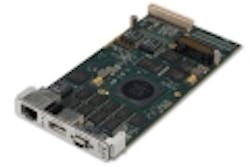Raytheon to build latest Small Diameter Bomb able to hit moving targets with three-mode radar, infrared, and laser seeker
EGLIN AFB, Fla., 10 Aug. 2010. U.S. Air Force and Navy officials are choosing the Raytheon Co. Missile Systems segment in Tucson, Ariz., to begin full-scale development of the latest version of the Small Diameter Bomb -- a munition small enough to be dropped from unmanned aerial vehicles (UAVs) and able to hit moving targets with an advanced precision guided munition seeker that blends millimeter-wave radar, uncooled imaging infrared sensors, and semi-active laser.
The Air Force Miniature Munitions Support Group at Eglin Air Force Base, Fla., awarded Raytheon Missile Systems a $450.8 million contract Monday to start engineering and manufacturing development of the GBU-53/B Small Diameter Bomb Increment II (SDB II) program. SDB II is a joint Air Force and Navy program.
This air-launched, standoff precision-strike weapon designed to defeat moving and fixed targets in bad weather initially will be carried on the F-15E Strike Eagle fighter-bomber, as well as the F-35B and F-35C Joint Strike Fighter. Experts say the 250-pound, 6-foot-long, 7.5-inch-diameter smart munition also can be carried on the latest version of the Predator UAV.
Raytheon testing has verified that the advanced munition's form factored tri-mode seeker can switch seamlessly between its millimeter wave radar, imaging infrared and semi-active laser guidance systems. The GBU/53-B seeker proved its reliability during flight testing when it flew 26 missions in 21 days without a hardware failure, company officials say. Raytheon should start deliveries of the latest version of the Small Diameter Bomb in 2013.
"Raytheon's innovative use of an uncooled IIR seeker met all the warfighter's requirements and reduced the weapon's total life-cycle cost and logistics footprint," says Taylor W. Lawrence, president of Raytheon Missile Systems.
The Air Force chose Raytheon over a competing team of the Boeing Co. Defense, Space & Security segment in St. Louis, and the Lockheed Martin Corp. Missiles and Fire Control segment in Orlando, Fla. Boeing is prime contractor for the first-generation Small Diameter Bomb, which began delivering the first-generation munition in 2006 and delivered the 1,000th round in 2008.
The Small Diameter Bomb is designed to fit inside concealed weapons bays in aircraft such as the F-35, the B-2 stealth bomber, and the developmental stealthy Boeing F-15 Silent Eagle. The small size of the munition helps reduce the radar signatures of the aircraft that carry it, as well as keep collateral damage to a minimum when it attacks is targets.
For more information contact Raytheon Missile Systems online at www.raytheon.com.
